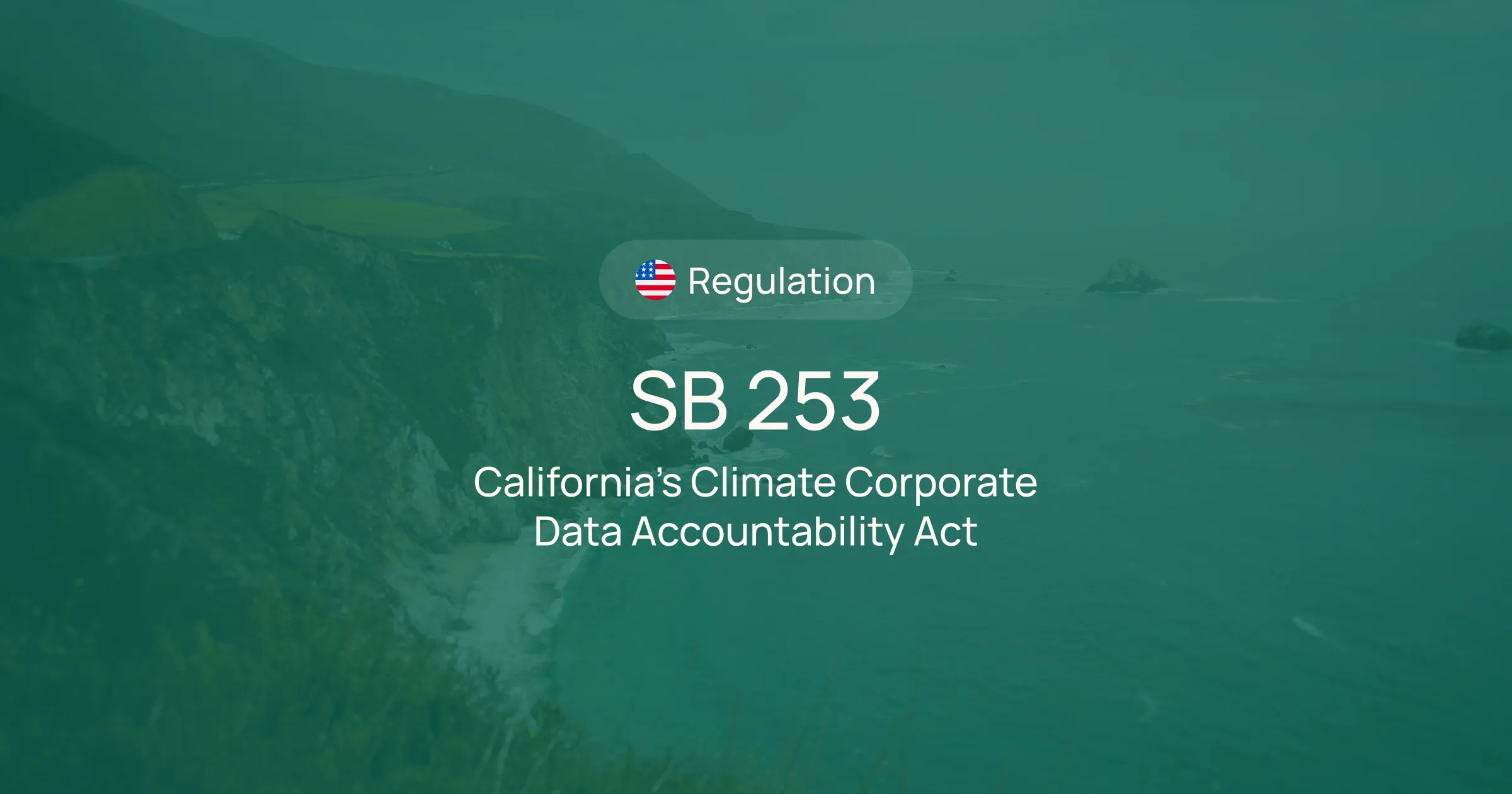Financed emissions refer to greenhouse gases that are produced as a result of an organization's investment activities. These emissions are a significant aspect of an organization's carbon footprint, often overlooked in traditional greenhouse gas accounting. Understanding and managing financed emissions is an essential part of comprehensive carbon management and sustainability strategies for any financial institution.
Financed emissions can be challenging to measure and manage due to their indirect nature. They are not produced directly by an organization's operations but are a result of its financial activities. Despite these challenges, tracking and reducing financed emissions is crucial for organizations aiming to achieve net-zero emissions and contribute to global climate change mitigation efforts.
Understanding Financed Emissions
Financed emissions are a type of Scope 3 emissions, which are indirect emissions that occur in an organization's value chain. Financed emissions are one of three parts of the global GHG accounting and reporting standard for the financial industry. While Scope 1 and Scope 2 emissions come from sources that an organization owns or controls, Scope 3 emissions, including financed emissions, come from sources that the organization does not own or directly control.
Financed emissions are unique among Scope 3 emissions because they result from an organization's financial activities rather than its operational activities. This includes emissions from investments in fossil fuel projects, emissions from loans to companies in high-emitting industries, and emissions from underwritten insurance policies for high-emitting activities.
7 Types of Financed Emissions
There are several types of financed emissions, depending on the nature of the financial activity. Here are the 7 types of financed emissions:
Listed Equity & Corporate Bonds
Includes all types of corporate bonds for general corporate purposes and all listed equity like common stock and preferred stock.
Business Loans and Unlisted Equity
This encompasses all business loans and equity investments in private companies, including all loans and lines of credit for general corporate purposes to businesses, nonprofits, and other organizational structures not traded on a market.
Project Finance
Defined as loans or equities to projects for specific purposes with known use of proceeds, such as construction and operation of various types of projects.
Commercial Real Estate
This class includes on-balance sheet loans for the purchase and refinance of commercial real estate and investments in commercial properties used for income-generating activities.
Mortgages
Pertains to on-balance sheet loans for the purchase and refinance of residential properties, including individual homes and small multifamily housing.
Motor Vehicle Loans
These are on-balance sheet loans and lines of credit used to finance one or several motor vehicles, with financial institutions defining the vehicle types to include in their inventory of financed emissions.
Sovereign Debt
Comprises sovereign bonds and loans of all maturities issued in domestic or foreign currencies, leading to the transfer of funds to the borrowing country.
Measuring Financed Emissions with PCAF
Measuring financed emissions can be complex due to the indirect nature of these emissions. However, several approaches can be used to estimate financed emissions, including the use of emissions factors, financial proxies, tools like Arbor’s Carbon Calculator and portfolio carbon footprinting.
What is the Partnership for Carbon Accounting Financials (PCAF)?
The Partnership for Carbon Accounting Financials (PCAF) is a global partnership of financial institutions that work together to develop and implement a harmonized approach to assess and disclose the greenhouse gas (GHG) emissions associated with their loans and investments. This initiative allows financial institutions to understand and transparently report on the carbon impact of their financial activities, which is crucial for managing climate risks and aligning with broader sustainability goals. PCAF provides a standardized methodology for carbon accounting, enabling institutions to measure, manage, and reduce their carbon footprint in the financial sector.
PCAF Scoring System
The PCAF scoring system offers a sophisticated method to evaluate the carbon impact of financial institutions, grading the quality of data used in calculating greenhouse gas emissions from financial activities. This system ranges from Score 1, denoting high reliability, to Score 5, indicating a lower level of certainty.
Score 1 - High Certainty
This score represents the most reliable data, typically involving supplier-specific emission factors. An example of a Score 1 scenario could be a financial institution using precise emission factors provided directly by a supplier, ensuring highly accurate emissions data for their calculations. This level of detail is instrumental in precisely assessing the carbon footprint of specific investments or loans.
Score 5 - Low Certainty
On the other end of the spectrum, Score 5 is assigned to data that is considered less certain. An example of this might be spend-based calculations, where emissions are estimated based on the amount of money spent in a particular category or with a specific supplier. While this method provides an approximation, it lacks the specificity and reliability of supplier-specific data and is, therefore, marked with higher uncertainty.
PCAF’s Methodology
The methodology of PCAF involves a comprehensive and rigorous approach to accounting for carbon emissions related to financial activities. This methodology is designed to ensure accuracy and consistency, integrating global standards and practices in carbon accounting. It facilitates the measurement of both direct and indirect financed emissions, providing financial institutions with a robust framework for assessing their carbon impact and identifying areas for improvement.
PCAF Categories
The Partnership for Carbon Accounting Financials (PCAF) breaks down financed emissions into three distinct categories to better understand and manage the carbon footprint of financial activities. These categories are vital for pinpointing the specific contributions to the overall carbon footprint and formulating effective strategies for emission reduction and sustainable investment.
Part A - Financed Emissions
This category encompasses the emissions attributed to a financial institution's loans and investments. It includes the greenhouse gases emitted by the activities or projects that the institution has funded. This detailed categorization allows financial entities to assess and address the direct environmental impact of their financing decisions.
Part B - Facilitated Emissions
Facilitated emissions refer to those emissions that a financial institution indirectly influences through its financing activities. This includes advising or facilitating transactions like mergers, acquisitions, and capital raising, which indirectly contribute to greenhouse gas emissions. Understanding facilitated emissions helps institutions to gauge their broader, indirect impact on the environment.
Part C - Insurance-Associated Emissions
These emissions are linked to the insurance and reinsurance activities of financial institutions. They account for the greenhouse gases associated with the projects, properties, and activities that are insured or reinsured by the institution. This category highlights the environmental implications of the insurance sector and the need for integrating sustainability into insurance practices.
Managing Financed Emissions
Managing financed emissions involves identifying and reducing the emissions associated with an organization's financial activities. This can be achieved through a variety of strategies, including divestment from high-emitting industries, investment in low-carbon alternatives, and engagement with investee companies to encourage them to reduce their emissions.
Divestment involves withdrawing investment from high-emitting industries or projects. This can be a powerful tool for reducing financed emissions, but it can also be controversial due to the potential economic impacts. Investment in low-carbon alternatives involves shifting financial resources towards industries or projects that produce fewer emissions. This can help to reduce financed emissions while also supporting the transition to a low-carbon economy.
Engagement Strategies
Engagement with investee companies is another key strategy for managing financed emissions. This involves using an organization's influence as an investor to encourage companies to reduce their emissions. Engagement can take many forms, from formal shareholder resolutions to informal discussions with company management.
Engagement can be a powerful tool for reducing financed emissions, but it requires a proactive and strategic approach. It involves not only encouraging companies to reduce their emissions, but also monitoring their progress and holding them accountable for their commitments.
Policy and Regulation
The management of financed emissions is increasingly being shaped by policy and regulation. Many jurisdictions are introducing requirements for financial institutions to disclose their financed emissions and to take steps to reduce them. These requirements are often part of broader efforts to align the financial sector with the goals of the Paris Agreement on climate change.
These policies and regulations can provide a strong incentive for organizations to manage their financed emissions. However, they also present challenges, particularly in terms of the complexity of measuring and reporting financed emissions. Organizations need to stay abreast of these developments and ensure they have the capabilities to comply with these requirements.
B15: Canadian Sustainability Guideline
Guideline B-15, issued by the Office of the Superintendent of Financial Institutions (OSFI) in Canada, establishes a comprehensive framework for managing climate-related risks within federally regulated financial institutions (FRFIs). This guideline underscores the importance of a proactive and risk-based approach to climate risk management. Set to be effective from fiscal year-end 2024 for major banks and insurance groups and 2025 for other FRFIs, B15 demands that institutions incorporate climate risk considerations into their governance, risk management, and strategic planning processes. The guideline's implementation marks a significant step toward aligning the financial sector with international climate goals and enhancing the resilience of financial institutions against climate-related risks
Implications for Carbon Management
Financed emissions have significant implications for carbon management. They represent a substantial portion of an organization's carbon footprint, and managing them is crucial for achieving net-zero emissions. Moreover, financed emissions are increasingly being recognized as a key aspect of corporate responsibility and sustainability.
Managing financed emissions requires a comprehensive approach that integrates financial and environmental considerations. It involves not only reducing emissions from financial activities, but also leveraging financial resources to support the transition to a low-carbon economy. This can involve a range of strategies, from divestment and low-carbon investment to engagement and advocacy.
Role of Financial Institutions
Financial institutions play a crucial role in managing financed emissions. As the providers of capital, they have the power to influence the emissions of the companies and projects they finance. By managing their financed emissions, financial institutions can make a significant contribution to climate change mitigation.
However, managing financed emissions also presents challenges for financial institutions. It requires them to balance their financial objectives with their environmental responsibilities. It also requires them to navigate a complex and evolving landscape of policy and regulation.
Role of Non-Financial Organizations
While financial institutions are at the forefront of managing financed emissions, non-financial organizations also have a role to play. This includes companies that receive finance, as well as institutional investors such as pension funds and endowments.
Companies can reduce their financed emissions by improving their environmental performance, thereby reducing the emissions associated with their financial activities. Institutional investors can manage their financed emissions by considering environmental factors in their investment decisions and engaging with the companies in their portfolios.
Summary
Financed emissions are a critical component of an organization's carbon footprint and a key aspect of carbon management. By understanding and managing these emissions, organizations can contribute to global climate change mitigation efforts and align themselves with the goals of the Paris Agreement.
While managing financed emissions presents challenges, it also presents opportunities. It offers a chance for organizations to demonstrate their commitment to sustainability, engage with their stakeholders in meaningful ways, and contribute to the transition to a low-carbon economy.
As you navigate the complexities of financed emissions and strive for a robust carbon management strategy, Arbor is your ally. Our platform empowers executives and project leaders like you to tackle environmental challenges with precision and ease. With Arbor's Carbon Management Platform, you can effortlessly calculate, report, and gain insights into your company's emissions, ensuring compliance and leading the charge toward sustainability. Don't let stakeholder pressure, time constraints, or unreliable data hinder your progress. Embrace the opportunity to transform your organization's carbon footprint into a competitive advantage.
Request a demo today and take the first step towards a more sustainable future for your company.
Measure your carbon emissions with Arbor
Simple, easy carbon accounting.

FAQ's on Financed Emissions
What is the Net Zero Asset Managers Initiative and what are its objectives and membership details?
The Net Zero Asset Managers Initiative is a collective effort involving asset managers who aim to support the achievement of net zero greenhouse gas emissions by 2050 or earlier. This initiative consists of 273 participating asset managers who together oversee more than US$61.3 trillion in assets. Each member has committed to establishing objectives that are in line with a pathway to net zero emissions. Additionally, they pledge to actively engage in stewardship and utilize corporate interactions to promote progress among their stakeholders. The initiative also has ties to the PAII, sharing four foundational network partners with this entity.
What is the Net Zero Investment Framework by The Paris Aligned Investment Initiative and how does it help financial institutions?
The Net Zero Investment Framework, developed by The Paris Aligned Investment Initiative (PAII), is a strategic tool designed to assist financial institutions globally in setting and achieving their net-zero emissions goals. This Initiative, comprising a coalition of four investor networks, provides comprehensive guidelines and methodologies that help these institutions manage their financed emissions effectively. The framework serves as a global expansion of these principles, aiming to streamline and unify the approach toward achieving net zero targets across the financial sector.
What is the role of TCFD and ISSB in promoting sustainability reporting in financial markets?
The Taskforce for Climate-related Financial Disclosures (TCFD) plays a pivotal role in promoting sustainability by providing an analytical framework designed for companies to transparently report their climate-related risks and opportunities. This standardized reporting assists investors and lenders in evaluating the sustainability credentials of companies, ensuring a consistent and comparable basis for assessment across the board.
Similarly, the International Sustainability Standards Board (ISSB) contributes substantially to the advancement of sustainability reporting in financial markets. Established under the purview of the IFRS Foundation, the ISSB is not merely another provider of voluntary guidelines. Instead, it strives to set a worldwide standard for sustainability reporting that could potentially be mandated by governments. This ambition positions the ISSB to set the benchmark for investor expectations regarding sustainability disclosures by corporations, thereby establishing a uniform standard that enhances transparency and accountability in global financial markets.
What are some previous articles related to greenhouse gas accounting and sustainable investing mentioned in the passage?
The passage lists several previous articles that discuss aspects of greenhouse gas accounting and sustainable investing. These articles include:
1. An article detailing the significance of the Greenhouse Gas Protocol for investors, published on August 30, 2023, which focuses on the importance of this framework in investing decisions.
2. A discussion on main frameworks for carbon accounting applicable to investors and guidance on their implementation, from August 18, 2023.
3. A piece from September 18, 2023, that transitions from the topic of measuring emissions to managing them, specifically aimed at investors in private markets.
4. An explanation of the International Sustainability Standards Board (ISSB), providing insights into how enhanced information can lead to better investment outcomes, dated June 29, 2023.
5. An article from February 25, 2021, clarifying various terms like Carbon Neutral and Net Zero within the context of climate action and sustainability.
6. An introductory guide to carbon neutral certification, published on May 27, 2021, laying the foundational knowledge for understanding this certification process.
These articles collectively cover a range of topics vital for investors concerned with sustainability and the environmental impact of their portfolios.
What are some key frameworks and guidelines available for financial institutions to calculate and disclose their financed emissions?
Several key frameworks and guidelines exist to help financial institutions calculate and disclose their financed emissions. The Partnership for Carbon Accounting Financials (PCAF) provides a leading standard, enabling consistent and reliable emissions calculations and allowing for comparisons between firms. Additionally, Guideline B-15, issued by the Office of the Superintendent of Financial Institutions (OSFI) in Canada, establishes a comprehensive framework for managing climate-related risks within federally regulated financial institutions, effective from fiscal year-end 2024 for major banks and insurance groups and 2025 for other institutions.
How can Arbor help businesses measure and manage their financed emissions?
Arbor offers solutions to assist businesses in accurately measuring and effectively managing emissions associated with their financing activities. By implementing tools and strategies tailored to the needs of each business, Arbor aids in tracking and mitigating the environmental impact of funded projects or investments, ensuring more sustainable business practices.




.webp)











%20Arbor.avif)





%20Arbor.avif)


.avif)






%20Arbor%20Canada.avif)

.avif)
%20Arbor.avif)
.avif)






_.avif)
.avif)
%20Arbor.avif)




%20Software%20and%20Tools.avif)





.avif)
.avif)




%20EU%20Regulation.avif)












.avif)


%20Arbor.avif)









_%20_%20Carbon%20101.avif)







.avif)

.avif)
.avif)


.avif)








